Dogs
20 Dalmatian Mixes: A Symphony of Spots and Traits
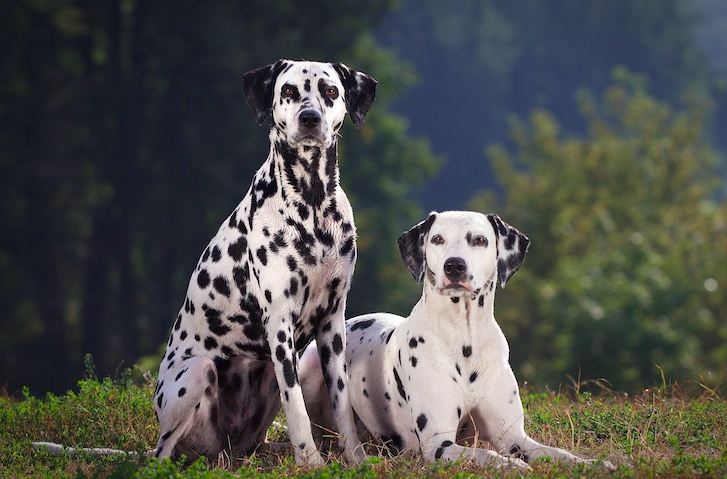
We don’t have a lot of information on the Dalmatian’s past. However, we know that the Dalmatian hybrid is one of the more interesting designer dog breeds to have as a parent. Meanwhile, it is not known exactly where the Dalmatian originated, and it is known that he was once employed as a coach dog in the Middle East.
They were frequently employed to trot beside horses and wagons, acting as both a guide and a protector for the animals. Firefighters and their horse-drawn fire engines have been a part of his job history in more recent years.
He is closely connected with firefighters because of their role in guiding and warning citizens of impending danger. Because of his appearance in the 1961 Disney picture 101 Dalmatians, he has earned the reputation of being notoriously cute and a gorgeous canine companion to have.
According to the American Kennel Club, he is now classified as the 56th most common dog breed in the United States as of 2020. Between the paws and the shoulder of his back, he stands between 19 and 24 inches tall and weighs between 45 and 70 pounds, which qualifies him as a large dog.
On the other hand, the Dalmatian is a robust and muscular dog beneath his beautiful coat. He has got a lot of energy that needs to be released; otherwise, he has a reputation for being destructive in the household. Because of his past as a coach dog, he possesses strong protective instincts, which enable him to be a devoted part of the family.
Because of their high level of energy, reserved attitude toward strangers, and destructive behavior, they are frequently mixed with other breeds to produce a more docile companion. You’re lucky because we’ve compiled a list of 20 of the prettiest Dalmatian mixes available, so have a look!
Dalmatian mixes that are popular nowadays
Designer dogs are extremely popular right now and for a variety of reasons.
Because they mix the characteristics of several different breeds into a single pup, there are now hundreds of different canine concoctions available, allowing you to have a dog that is a little bit different from your neighbor.
On top of that, there is evidence suggesting that many designer dogs are also more resilient to health difficulties due to their genetic variation, which is encouraging. Expect your designer dog to combine his parents’ physical appearance and personality attributes, just as you would expect from any designer dog.
Nobody has any indication as to what kind of brew will be used. Therefore, it is critical that you appreciate the traits of both parents and that you can fulfill all of their requirements, regardless of the outcome.
Most Dalmatian mixed pooches are lively, devoted and protective in the wild, and this is something you can expect from almost all of them. They will also not be overly dependent on you and should be reasonably simple to groom. But what else should you expect? Let’s find out for ourselves!
1). Boxmatian
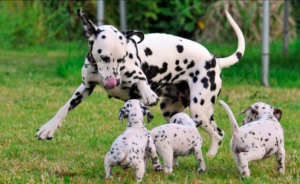
Breeds from Dalmatian and Boxer.
In terms of size and height, the Boxmatian will weigh from 50 to 75 pounds and stand between 20 and 24 inches tall, with a strong and athletic build to match.
Because he is part Boxer, he will most certainly get his Boxer father’s squarer face and snout, but owing to the Dalmatian parent’s influence, he may avoid the Brachycephalic syndrome and its accompanying health risks, which is a huge plus!
This guy will be extremely lively and playful. Therefore, if you want to bring one of these guys into your life, you must be physically active and guarantee that he receives at least 60 minutes of intensive activity every day to flourish.
Because he will be protective of his family, socialization is essential while still a puppy.
2). Huskmatian
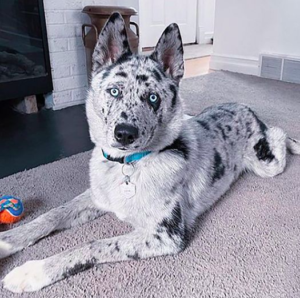
Breeds from Dalmatian and Siberian Husky.
In addition to being an enthusiastic gentleman, this mixed breed dog will require somewhere between 60 and 90 minutes of exercise every day. Therefore a family with a lot of energy is required! When you combine the protectiveness of the Dalmatian with the talkative character of the Husky, you can be confident that you will have a fantastic watchdog on hand.
Because it contains half Husky, this combination will provide you with plenty of excitement. Unlike the Husky, the Huskmatian is likely to inherit a blend of his parents’ coats, making him shorter than the Husky but requiring more grooming than the Dalmatian in most cases.
He may receive the spots or the mask of either father and different colour eyes, resulting in a pup with a distinct appearance. Depending on his height, he will be between 40 and 65 pounds in weight and between 20 and 24 inches tall.
3). Corgmatian
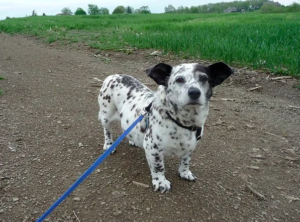
Breeds from Dalmatian and Corgi.
Everything about a Corgi mix is adorable, and the Corgmatian is one of the most adorable. As a result, he will most likely have the lower stature and longer body of the Corgi parent and the colors and spots of the Dalmatian parent; he will grow to be between 14 to 20 inches tall and weigh between 30 and 55 pounds, depending on his parentage.
You can be certain that he will require a great deal of physical and mental stimulation and that he will enjoy a lot of interactive game sessions because both of his parents are highly clever working dogs.
At first, he will be reserved around strangers, but as soon as his family welcomes them into their house, he will relax and change into a sociable canine butterfly.
4). Daloodle
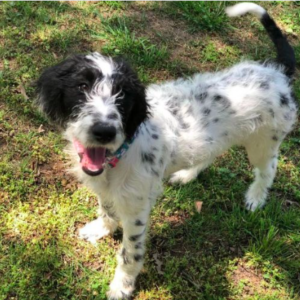
Breeds from Dalmatian and Poodle.
The Daloodle (or Dalmadoodle, depending on who you ask) is another lively dog that is likely to enjoy the water and farm animals. Not only is his given name amusing, but so is his demeanour, and he will want an outdoor space where he can engage in intellectual games to keep his sharp mind entertained.
The poodle mix in question is only one of many amusing and bouncy poodle mixtures available, some of which are Hypoallergenic breeds. The Daloodle will most likely have a longer coat with a slight curl to it, and it will be coloured in shades of black, white, and grey.
While he may not be completely hypoallergenic, he will shed significantly less than the majority of the dogs on this list, which may be a determining factor for some families. He will reach between 17 and 24 inches in height and weigh between 40 and 70 pounds when he is fully matured.
5). Tzumatian
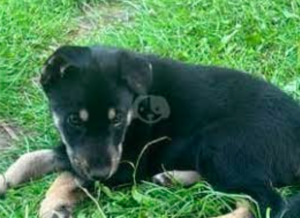
Breeds from Dalmatian and Shih Tzu.
A superb family dog, the Tzumatian enjoys spending time with his family because he combines a protective and peaceful demeanor. He is an excellent guard dog.
This also indicates that, like the majority of Tzu mixes, he will most likely suffer from separation anxiety and would like to be adopted by a family that will be able to spend a lot of their time with him.
He is a loving and compassionate dog who will go to any length to please his owner! You should not have to knot his hair above his eyes because his coat will be shaggier than the Dalmatians’, but it will not be too long.
He will be any colour of the Shih Tzu parent, but he will have black spots or patches on his coat. He will be between 13 and 20 inches tall and weigh between 20 and 50 pounds, depending on the parent’s color.
6). Dobermatian
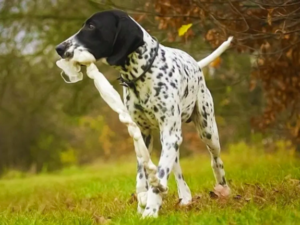
Breeds from Dalmatian and Doberman Pinscher.
The Doberman will be between 55 and 85 pounds in weight and between 21 and 26 inches in height, depending on the breed. You could be sure that this guy will be powerful, which means that his master will also need to be an experienced dog handler.
Despite having a short and sleek coat, he will be easy to keep, and his beautifully huge and triangular ears will contrast with his plump square snout. His half-Doberman heritage means he will be a fierce canine who will always guard his family and never let them down.
You will need to ensure that he is socialized and trained properly as a puppy so that he does not become overprotective, but if he is properly socialized and trained, this dog would be as loyal as they come (and a secret sweetheart at heart!)
7). Dalfoundland
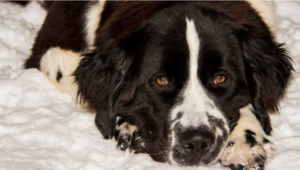
Breeds from Dalmatian and Newfoundland.
This gentleman is one of the more unique mixes on this list, but if you are fortunate enough to have one in your home, you can anticipate him to stand between 22 and 26 inches tall and also weigh between 60 and 110 pounds.
This youngster is expected to get both of his parents’ white and black colorings and a shaggy coat that will require a great deal of grooming and attention. Even though he is inherently protective of his family, his gigantic size and gentle attitude inherited from his Newfoundland parent will allow him to be relatively docile in the house.
His behavior with children and other family pets will be excellent, but he should always be supervised when around children due to his enormous size.
8). Dalmeagle
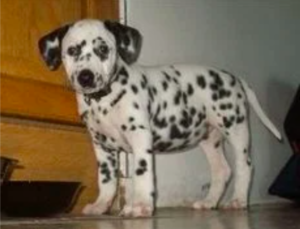
Breeds from Dalmatian and Beagle.
This happy-go-lucky mixed Beagle pup is a crowd-pleaser, and while he may be a little protective of his family at first, you can be sure that he will welcome everyone into the house with open paws in due course.
You may also be confident that he will enjoy the cosiness of the sofa and an unending supply of treats, but he will also enjoy regular hour-long walks and a good sniff of the neighborhood. His ears will be long and floppy, his tail will be long and pointing up to the sky, and he will walk with a joyful spring in his step.
His coat would be short and smooth, and it will be colored in the same shades of black, brown, and white as his parents. He will be between 15 and 22 inches tall and weigh between 30 and 50 pounds when fully grown.
9). Chihaumatian
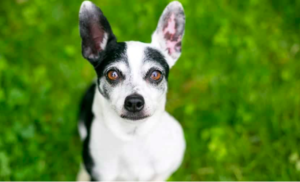
Breeds from Dalmatian and Chihuahua.
The Chihuamatian is an unusual combination, but one that may be highly effective with the proper training. His mixed-breed heritage means that, when left to his own devices, he has the potential to become overprotective. Still, under the guidance of an experienced trainer, he can be a loving family companion who also serves as an excellent watchdog.
You would not be able to carry or put this Chihuahua mix in your handbag because he will most likely stand between 8 and 18 inches tall and weigh between 20 and 40 pounds.
He will usually have the appearance of an enormous Chihuahua with the colors and spots of a Dalmatian on his coat. His eyes will be bug-like, and his coat will be either short or medium in length, depending on the coat of his Chihuahua father.
10). Bodatian
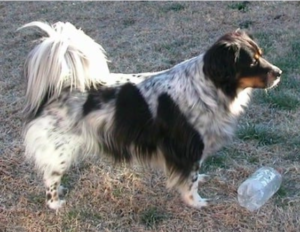
Breeds from Dalmatian and Border Collie
The Bodatian is a terrific canine companion for people with plenty of outdoor space and the facilities and time to exercise and train them regularly. This bright dog, half Border Collie, will require at least 60 minutes of intense activity every day to maintain his health. If this is not done, they could become destructive and dissatisfied.
Most likely, he will be protective of his family, and while he may not herd his family, he will be distrustful of strangers who come into his home. Those who like an autonomous canine will find the Bodatian an excellent choice.
Again, the length of his coat will be determined by his parent’s Border Collies coat, but if you look at his parent’s coat, you can expect his coat to be somewhere in the middle of the spectrum.
His colouration will most likely be black and white, just like both of his parents, and you may anticipate that he will be between 18 and 24 inches tall and weigh between 40 and 60 pounds when he is full-grown.
11). Dachshmatian
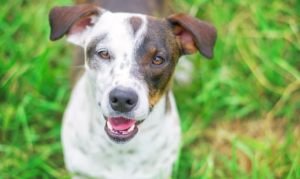
Breeds from Dalmatian and Dachshund
With floppy ears, the Dachshmatian is a medium-sized, long-haired puppy. Each of his enormous brown eyes will melt the hearts of everyone who comes into contact with him, and you can expect him to range in height from 10 to 20 inches and weigh between 25 and 45 pounds.
Depending on his Dachshund parents ‘ coats, his coat may be short or slightly longer and wiry, but you can expect black, brown, and white to be the most common hues. He is a highly clever dog with a strong hunt drive, and when you combine that with his stubbornness, you may want to consider keeping him on a leash.
His energy level is astonishing for such a small dog, and he needs a nice romp or two every day, but he also enjoys a good snuggle in the evening.
12). Labmatian
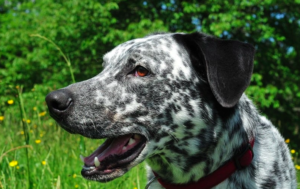
Breeds from Dalmatian and Labrador Retriever
It’s one of the most common Dalmatian mixes, and it’s called the Labmatian. It is believed that this breed was developed to increase the friendliness aspect of the Labrador Retriever and Dalmatian mix by one degree or another.
It is possible for some Dalmatians to become a little territorial and annoyed when people enter their territory. Making the Dalmatian and the Lab mix helps bring together the Lab’s family-friendly and sweet nature with the Dalmatian to create a well-balanced combination.
Height and weight will be between 19 and 24 inches, and he’ll weigh between 40 and 80 pounds when he’s through.
Due to the similarities between these breeds, you’re likely to end up with a coat that’s medium to short in length and a pup that’s somewhat shorter but slightly sticker in appearance than a purebred Dalmatian.
13). Pointermatian
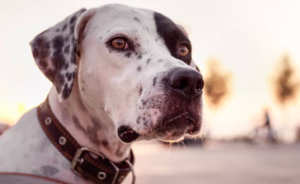
Breeds from Dalmatian and the German Shorthaired Pointer
The Pointermatian will stand between 18 and 22 inches tall and weigh between 40 and 65 pounds when fully grown and fully developed. Except for their height and coat color, this combination is virtually indistinguishable from the classic Dalmatian breed.
Because their German Shorthaired Pointer parent is a breed with a brown and white spotted coat, the spots are already there and will remain with this parent breed. He will be a cleverly mixed pup who will have a fascination with birds and require daily exercise to remain happy due to his hunting background.
He will, however, become a calm and kind canine companion that will enjoy nothing more than snuggling into your lap once you have brought him home.
14). Blue Dalmatian
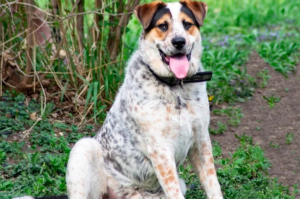
Breeds from Dalmatian and Blue Heeler (Australian Cattle Dog)
It’s not that the Blue Dalmatian is blue; he’s merely a mixed pup with hues like black, white, and grey that give him a (sort of) blue appearance compared to his Red Heeler cousin. Despite being short, his coat will be thick and dense, and it will shed just slightly over the year.
He would be between 18 and 22 inches in height and 40 to 60 pounds in weight, and he will be a small, stocky pup with a thick coat of fur. The Blue Dalmatian is most content when he has a job to do or a ranch to work on, whether it is herding or coaching farm animals.
He requires an active family who can keep up with his demanding exercise requirements. He will make an excellent watchdog and family defender; however, it is important to socialize him from an early age. Blue Heelers have grown popular as parent breeds for other herding breeds due to their kind disposition.
15). Rhodesian Dalmatian

Breeds from Dalmatian and Rhodesian Ridgeback are
In addition to being a rare breed, the Rhodesian Dalmatian is also a difficult breed to find. However, the boy will be well worth the effort once you do. He will be playful, gentle, and protective while remaining calm, affectionate, and not overly clingy.
Many families will find him a match made in heaven as long as they properly socialize and vigorously exercise him. He will have a short, silky coat that may or may not have a ridge running down the middle of his back.
With a blend of black, browns, and whites as his primary hues, he will likely have enormous floppy ears and the colouring of both of his parents. He will stand between 22 and 26 inches tall and weigh 55 and 75 pounds.
He will have a very athletic build and weigh between 55 and 75 pounds. A little thinner breed than other Ridgeback mixes, such as the Rhodesian Lab, should be expected from this cross.
16). Pitmatian
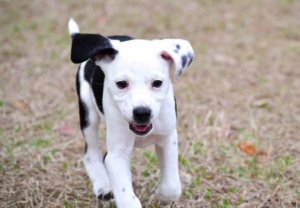
Breeds from Dalmatian and American Pitbull Terrier
It is expected that the Pitmatian will have a playful nature and will always be on the go. As a well-balanced dog, he will be both playful and social with everyone, but only when he has been satisfied that they have no intention of harming his family, whom he loves dearly.
With this individual, socialization is essential, but if you have a loving connection with him and shower him with praise, he will be loyal to the end. Check your local laws before breeding a Pitbull mix, just as any other breed.
His coat will accept any hue, with a strong likelihood that black and white will be included in the mix, and his coat will be short and sleek in appearance.
He will grow between 18 and 22 inches tall and weigh between 40 and 60 pounds, and he will require only the most basic maintenance. He’ll be muscular and athletic, and he’ll have a huge, cheeky smile to go with it.
17). Golden Dalmatian
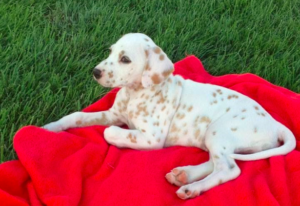
Breeds from Dalmatian and Golden Retriever
When a Golden Retriever and Dalmatian pup is born, the coat length and density of the Golden Retriever parent will usually be retained, with the colorings of the Dalmatian parent gaining prominence. luxurious puppy, who has feathering hair around his neck and ears, requires more grooming than a purebred Dalmatian, but he is worth it.
The pup stands between 20 and 24 inches tall and weighs between 50 and 70 pounds, making him a large-sized canine who requires a significant amount of room both inside and outside the home.
Mr Payne is a gentleman who is generous and engaging. He has a fierce and protective nature, which adds a little spice to the mix.
Once he has forgotten his initial aloofness, he is another well-balanced puppy who would be a good fit for many households and families. He will also benefit from one hour of physical activity every day, and he will surely have a fondness for water.
18). Australian Dalmatian
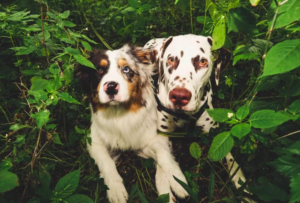
Breeds from Dalmatian and Australian Shepherd.
Like most Australian mixed breeds, the Australian Dalmatian is an exceptionally attractive pup with a mixture of spots, patches, and flecks of various colors, including black, brown, red, and grey. He may even inherit the different colored eyes of his Australian parent, which is a strikingly beautiful mixed breed in its own right.
He will be between 19 and 23 inches tall and weigh between 45 and 65 pounds when fully grown. This is yet another super clever mix with energy that needs to be channelled if you don’t want your furniture to be damaged.
Still, fortunately, because of his playful temperament, there are never-ending games to be had with him. Every day, he will require around one hour of physical activity.
19). Germatian

Breeds from Dalmatian and German Shepherd
This mixed-breed pup is the perfect protector and guardian! There is no better canine partner than the Germatian if this is what you are looking for in a canine friend. This breed, half German Shepherd, has a strong will and is a strong-willed dog.
The duty of having a strong streak is the requirement to be a strong leader. The most faithful of companionship will be yours if this is something that you can consistently provide them with. He is extremely brilliant, but in order to be happy, he requires a great deal of connection with his master in the form of mental games and training.
The length of his coat will be determined by the length of his German Shepherd mother’s coat. It will be a 50/50 mix of the two options. He may inherit the colours and markings of either parent, or he may inherit the colors and markings of both parents.
Despite his thick coat, you can anticipate him to be a robust and sturdy dog underneath it. Depending on his height, he will be between 50 and 80 pounds in weight and between 20 and 25 inches tall.
20). Bullmatian
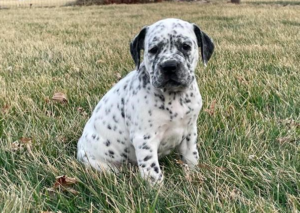
Breeds from Dalmatian and Bulldog
This is another unique combination on this list, but it will stir some heads! He will have the appearance of a bulkier Dalmatian or a slinkier Bulldog mix. Still, regardless of how you characterize him, he will be an equal blend of the two parents’ characteristics.
His coat will be short and smooth, like a baby’s. Bullmatians are more likely to adopt the Dalmatian’s black and white coloring and larger spots than other breeds. This mix, which stands between 18 and 23 inches tall and weighs between 60 and 80 pounds, will require a lot of space inside and outside his home and yard, depending on his size.
You can expect a lifelong buddy in this man, who will be bold and protective while still being loyal and sweet. As a result, he will want frequent cuddling in front of the television to avoid being grouchy.
He will also require socializing and a strong leader in terms of physical strength and pack leader mindset. While his grooming will be relatively simple compared to some of the other breeds on our list, this mixed pup will be a drooler, just like all Bulldog mixes.
Concluding Remarks
The purebred Dalmatian is a stunning canine breed, both on the inside on outside. Similarly, every Dalmatian mix on our list is a good match for its owner. All you would have to do now is pick which combination will best suit you and your lifestyle, and then start looking.
While nothing could be guaranteed when it comes to a designer dog, he will likely be nice and affectionate with his owners and their children. Although your Dalmatian mix may be a little possessive of their family, this isn’t necessarily a negative trait.
A mix of the other breeds on this list will certainly result in a well-balanced dog that everyone will fall in love with, so keep looking.
We appreciate you for taking the time to read!
Finally, we hope you found this article interesting? And what do you think about ”20 Dalmatian Mixes: A Symphony of Spots and Traits!?”
Please you should get in touch with us if you want to contribute to this article or advertise.
And let us know if you observe something that isn’t quite right.
Dogs
Exploring the Diverse World of Dog Breeds: A Look at the Seven Main Groups + the others

Exploring the Diverse World of Dog Breeds: A Look at the Seven Main Groups + the others
Dogs are one of the most diverse species on the planet, with hundreds of different breeds that vary widely in size, shape, temperament, and behavior. To help organize this diversity, dog breeds are often grouped into categories based on their original purpose or characteristics.
These groups, recognized by kennel clubs and breed organizations worldwide, provide a framework for understanding the different types of dogs and their typical traits. Here are the main groups of dogs:
- Sporting Group: These dogs were bred for hunting game birds, both on land and in the water. They are known for their stamina, intelligence, and willingness to please. Breeds in this group include the Labrador Retriever, Golden Retriever, and English Springer Spaniel.
- Hound Group: Hounds are known for their keen sense of smell and ability to track prey. They are often used for hunting and tracking game. Breeds in this group include the Beagle, Bloodhound, and Greyhound.
- Working Group: Dogs in this group were bred for specific tasks, such as guarding property, pulling sleds, or performing water rescues. They are known for their strength, intelligence, and trainability. Breeds in this group include the Siberian Husky, Boxer, and Great Dane.
- Terrier Group: Terriers were originally bred to hunt and kill vermin. They are known for their feisty and energetic nature. Breeds in this group include the Jack Russell Terrier, Bull Terrier, and Scottish Terrier.
- Toy Group: Toy breeds are small companion dogs that were bred for their portable size and charming personalities. They are often kept as lap dogs or companions. Breeds in this group include the Chihuahua, Pomeranian, and Shih Tzu.
- Non-Sporting Group: This group is a diverse collection of breeds that don’t fit into other categories. They vary widely in size, coat type, and temperament. Breeds in this group include the Bulldog, Poodle, and Dalmatian.
- Herding Group: These dogs were bred to control the movement of other animals, such as sheep or cattle. They are known for their intelligence, agility, and strong herding instincts. Breeds in this group include the Border Collie, Australian Shepherd, and German Shepherd Dog.
Each group has its own unique characteristics and traits, but all dogs share a common bond with humans as loyal companions and working partners. Understanding these groups can help you choose a breed that fits your lifestyle and preferences.
Sporting Group
- American Water Spaniel
- Boykin Spaniel
- Chesapeake Bay Retriever
- Clumber Spaniel
- Curly-Coated Retriever
- English Setter
- Flat-Coated Retriever
- Gordon Setter
- Irish Red and White Setter
- Irish Setter
- Irish Water Spaniel
- Nova Scotia Duck Tolling Retriever
- Pointer
- Spinone Italiano
- Sussex Spaniel
- Vizsla
- Weimaraner
- Welsh Springer Spaniel
- Wirehaired Pointing Griffon
Hound Group
- Afghan Hound
- American English Coonhound
- American Foxhound
- Basenji
- Black and Tan Coonhound
- Borzoi
- Cirneco dell’Etna
- Finnish Spitz
- Grand Basset Griffon Vendéen
- Greyhound
- Harrier
- Ibizan Hound
- Norwegian Elkhound
- Otterhound
- Petit Basset Griffon Vendéen
- Pharaoh Hound
- Plott
- Portuguese Podengo
- Redbone Coonhound
- Rhodesian Ridgeback
- Saluki
- Scottish Deerhound
- Sloughi
- Treeing Walker Coonhound
- Whippet
Working Group
- Akita
- Alaskan Malamute
- Anatolian Shepherd Dog
- Bernese Mountain Dog
- Black Russian Terrier
- Boerboel
- Boxer
- Bullmastiff
- Cane Corso
- Dogo Argentino
- Dogue de Bordeaux
- Greater Swiss Mountain Dog
- Great Pyrenees
- Komondor
- Kuvasz
- Leonberger
- Mastiff
- Neapolitan Mastiff
- Newfoundland
- Rottweiler
- Samoyed
- Siberian Husky
- St. Bernard
- Tibetan Mastiff
Terrier Group
- Airedale Terrier
- American Staffordshire Terrier
- Australian Terrier
- Bedlington Terrier
- Border Terrier
- Bull Terrier
- Cairn Terrier
- Cesky Terrier
- Dandie Dinmont Terrier
- Glen of Imaal Terrier
- Irish Terrier
- Kerry Blue Terrier
- Lakeland Terrier
- Manchester Terrier
- Miniature Bull Terrier
- Miniature Schnauzer
- Norfolk Terrier
- Norwich Terrier
- Parson Russell Terrier
- Russell Terrier
- Scottish Terrier
- Sealyham Terrier
- Skye Terrier
- Smooth Fox Terrier
- Soft Coated Wheaten Terrier
- Staffordshire Bull Terrier
- Welsh Terrier
- West Highland White Terrier
- Wire Fox Terrier
Toy Group
- Affenpinscher
- Brussels Griffon
- Cavalier King Charles Spaniel
- Chihuahua
- Chinese Crested
- English Toy Spaniel
- Havanese
- Italian Greyhound
- Japanese Chin
- Maltese
- Manchester Terrier (Toy)
- Miniature Pinscher
- Papillon
- Pekingese
- Pomeranian
- Poodle (Toy)
- Pug
- Shih Tzu
- Silky Terrier
- Toy Fox Terrier
- Yorkshire Terrier
Non-Sporting Group
- American Eskimo Dog
- Bichon Frise
- Boston Terrier
- Bulldog
- Chinese Shar-Pei
- Chow Chow
- Dalmatian
- Finnish Spitz
- French Bulldog
- Keeshond
- Lhasa Apso
- Lowchen
- Norwegian Lundehund
- Poodle (Miniature)
- Schipperke
- Shiba Inu
- Tibetan Spaniel
- Tibetan Terrier
- Xoloitzcuintli
Herding Group
- Australian Cattle Dog
- Australian Shepherd
- Bearded Collie
- Belgian Malinois
- Belgian Sheepdog
- Belgian Tervuren
- Border Collie
- Bouvier des Flandres
- Briard
- Canaan Dog
- Cardigan Welsh Corgi
- Collie (Rough)
- Collie (Smooth)
- German Shepherd Dog
- Icelandic Sheepdog
- Miniature American Shepherd
- Norwegian Buhund
- Old English Sheepdog
- Pembroke Welsh Corgi
- Polish Lowland Sheepdog
- Puli
- Pyrenean Shepherd
- Shetland Sheepdog
- Spanish Water Dog
- Swedish Vallhund
Miscellaneous Class
- American Hairless Terrier
- Barbet
- Biewer Terrier
- Boerboel
- Coton de Tulear
- Czechoslovakian Vlcak
- Lagotto Romagnolo
- Mudi
- Nederlandse Kooikerhondje
- Peruvian Inca Orchid
- Portuguese Podengo
- Rat Terrier
- Russian Toy
- Sloughi
- Thai Ridgeback
- Xoloitzcuintli
Rare Breeds
- Azawakh
- Bergamasco
- Chinook
- Cirneco dell’Etna
- Dandie Dinmont Terrier
- Finnish Lapphund
- Finnish Spitz
- Grand Basset Griffon Vendéen
- Kooikerhondje
- Lagotto Romagnolo
- Lowchen
- Norwegian Lundehund
- Otterhound
- Peruvian Inca Orchid
- Schipperke
- Sealyham Terrier
- Skye Terrier
- Sussex Spaniel
- Swedish Vallhund
- Tibetan Mastiff
Designer and Hybrid Breeds
- Labradoodle (Labrador Retriever + Poodle)
- Goldendoodle (Golden Retriever + Poodle)
- Cockapoo (Cocker Spaniel + Poodle)
- Pomsky (Pomeranian + Husky)
- Maltipoo (Maltese + Poodle)
- Cavapoo (Cavalier King Charles Spaniel + Poodle)
- Yorkipoo (Yorkshire Terrier + Poodle)
- Sheepadoodle (Old English Sheepdog + Poodle)
- Bernedoodle (Bernese Mountain Dog + Poodle)
- Aussiedoodle (Australian Shepherd + Poodle)
- Shih-Poo (Shih Tzu + Poodle)
- Boxerdoodle (Boxer + Poodle)
- Schnoodle (Schnauzer + Poodle)
- Chorkie (Chihuahua + Yorkshire Terrier)
- Puggle (Pug + Beagle)
- Cockapoo (Cocker Spaniel + Poodle)
- Labradoodle (Labrador Retriever + Poodle)
- Goldendoodle (Golden Retriever + Poodle)
- Cockapoo (Cocker Spaniel + Poodle)
- Pomsky (Pomeranian + Husky)
- Maltipoo (Maltese + Poodle)
- Cavapoo (Cavalier King Charles Spaniel + Poodle)
- Yorkipoo (Yorkshire Terrier + Poodle)
- Sheepadoodle (Old English Sheepdog + Poodle)
- Bernedoodle (Bernese Mountain Dog + Poodle)
- Aussiedoodle (Australian Shepherd + Poodle)
- Shih-Poo (Shih Tzu + Poodle)
- Boxerdoodle (Boxer + Poodle)
- Schnoodle (Schnauzer + Poodle)
- Chorkie (Chihuahua + Yorkshire Terrier)
- Puggle (Pug + Beagle)
Rare and Uncommon Breeds
- Bergamasco Shepherd
- Catahoula Leopard Dog
- Chinook
- Finnish Spitz
- Glen of Imaal Terrier
- Kooikerhondje
- Lagotto Romagnolo
- Mudi
- Otterhound
- Peruvian Inca Orchid
- Portuguese Podengo
- Pyrenean Shepherd
- Russian Toy
- Saluki
- Sloughi
- Swedish Vallhund
- Tibetan Mastiff
- Toy Fox Terrier
- Xoloitzcuintli
Conclusion
In conclusion, the world of dogs is incredibly diverse, with hundreds of breeds that vary widely in size, shape, temperament, and behavior. To help categorize this diversity, dog breeds are grouped into categories based on their original purpose or characteristics.
These groups, such as the Sporting Group, Hound Group, Working Group, Terrier Group, Toy Group, Non-Sporting Group, and Herding Group, provide a framework for understanding the different types of dogs and their typical traits.
Each group has its own unique characteristics and traits, but all dogs share a common bond with humans as loyal companions and working partners. Whether you’re looking for a hunting companion, a family pet, a working dog, or a lap dog, there’s a breed out there for everyone.
Understanding these groups can help you choose a breed that fits your lifestyle and preferences, ensuring a happy and fulfilling relationship between you and your canine companion.
Frequently Asked Questions (FAQs)
What are some breeds in the Sporting Group, and what are their typical characteristics?
Some breeds in the Sporting Group include the Labrador Retriever, Golden Retriever, and English Springer Spaniel. These breeds are known for their high energy levels, intelligence, and friendly nature. They are often used for hunting and retrieving game.
Which breeds are typically found in the Hound Group, and what sets them apart from other groups?
The Hound Group includes breeds such as the Beagle, Bloodhound, and Greyhound. Hounds are known for their keen sense of smell and ability to track prey. They are often used for hunting and tracking game.
What are some examples of breeds in the Working Group, and what are their common characteristics?
Breeds in the Working Group include the Siberian Husky, Boxer, and Great Dane. These dogs were bred for specific tasks, such as guarding property or pulling sleds. They are known for their strength, intelligence, and trainability.
Can you name a few breeds from the Terrier Group, and what makes them unique?
Terriers, such as the Jack Russell Terrier, Bull Terrier, and Scottish Terrier, were originally bred to hunt and kill vermin. They are known for their feisty nature and high energy levels.
What are some breeds in the Toy Group, and what role do they typically play in households?
The Toy Group includes breeds like the Chihuahua, Pomeranian, and Shih Tzu. These breeds are small in size and are often kept as lap dogs or companions. They are known for their portable size and charming personalities.
We appreciate you for taking the time to read this article!
Finally, we hope you found this article interesting? And what do you think about ”Exploring the Diverse World of Dog Breeds: A Look at the Seven Main Groups!?”
Please feel free to share or inform your friends about this article and this site, thanks!
And let us know if you observe something that isn’t quite right.
Dogs
Comprehensive List of Essential Whelping Kit Items

Comprehensive List of Essential Whelping Kit Items
If you’re just making your start as a dog breeder, you’ve likely got a lot of things on your mind. Finding a suitable mate for your dog, getting them tested—there’s a lot of mental and physical effort that goes into breeding responsibly. One way to make things easier for yourself is assembling your whelping kit early. A whelping kit contains all the necessary items to assist a mother dog during labour and ensure the safe delivery of her puppies.
For both experienced breeders and first-time pet owners, assembling a comprehensive whelping kit can make a significant difference in managing the birthing process. Having everything on-hand is a good idea, as you don’t want to suddenly be stuck without essential items in the midst of delivery.
Comprehensive List of Essential Whelping Kit Items
-
Whelping Box
The first and most crucial item is the whelping box. This is where the mother dog will give birth and care for her puppies during their first weeks of life. It should be spacious enough for the mother to move comfortably but with walls high enough to safely contain the newborn puppies.
-
Clean Towels and Blankets
You’ll need several clean towels to help dry puppies immediately after birth, which stimulates them to breathe and keeps them warm. Soft blankets can be used to line the whelping box for additional comfort.
-
Heating Pad or Heat Lamp
Maintaining a warm environment is essential, especially for newborn puppies who cannot regulate their body temperature. A heating pad or a heat lamp can provide the necessary warmth, but make sure it’s set up to avoid direct contact with the puppies and mother.
-
Digital Thermometer
To monitor the mother’s temperature leading up to labour, which can indicate when birth is imminent. A drop in body temperature is a common sign of labour starting within 24 hours.
-
Disposable Gloves
These are essential for hygiene. Wearing gloves during the delivery helps prevent the spread of infection and allows you to assist with the birth if necessary without introducing contaminants. You also don’t want to be touching anything else with dirty hands, so you may need to use multiple pairs of gloves if you have to operate your phone or move around any other items. Thankfully, a box of gloves is cheap and easy to come by.
-
Antiseptic Solution and Hand Sanitizer
Keeping your hands and the environment clean is crucial. An antiseptic solution can be used for cleaning any instruments or areas around the whelping box, while hand sanitizer should be used before and after assisting with the delivery.
-
Sterile Scissors and Dental Floss
In some cases, you may need to cut the umbilical cords. Sterile scissors are necessary for this task, and unwaxed dental floss can be used to tie off the cords before cutting to prevent bleeding.
-
Aspiration Bulb or Decongestant Syringe
To clear the puppies’ airways of mucus or fluids immediately after birth. It’s crucial for helping puppies who aren’t breathing well on their own initially.
-
Iodine Solution
After cutting the umbilical cord, applying iodine to the end helps prevent infection in the newborn puppy.
-
Puppy Feeding Kit
Includes bottles and appropriate puppy formula in case the mother is unable to nurse her puppies immediately or if there are rejected or weak puppies that need supplementary feeding.
Preparation and Storage Instructions
Organising the Kit
Arrange your whelping kit in order of likely usage. Items needed first, like gloves and towels, should be at the top or in the most accessible part of your storage container.
Storage
Keep the whelping kit in a clean, dry place that’s easily accessible during the whelping process. A portable, waterproof container with compartments can be ideal for quick access and organisation. It’s best to keep the kit in the same room where your dog will be staying, just so you don’t have to go looking for your kit once the time comes.
Preparation
Check and restock your kit well before the expected birthing date. Make sure all consumables are within their expiration date and that reusable items are clean and functional.
Troubleshooting Tips for Common Whelping Challenges
During the birthing process, several issues might arise that require immediate attention. Here are some troubleshooting tips for the most common challenges:
Stuck Puppy
If a puppy seems stuck, first ensure the mother is comfortable and not stressed. Wearing your disposable gloves, you can gently assist by providing mild traction on the puppy with a clean towel. If the puppy does not come free with gentle assistance, call your veterinarian immediately.
Weak Contractions
If the mother dog’s contractions seem weak and she’s having trouble delivering the puppies, a warm, sugar-water solution can help boost her energy. If there’s no improvement, it’s critical to contact your veterinarian, as she may need medication to strengthen contractions or even a caesarean section.
Non-responsive Puppy
If a puppy is not breathing or is too weak to nurse, stay calm. Use the decongestant syringe to clear its airways gently. Rubbing the puppy briskly with a towel can also stimulate breathing. If these methods don’t work, performing a safe puppy CPR and rushing the puppy to a vet is your next step.
Extra Useful Items
While the essentials will cover most situations, having a few additional items on hand can be beneficial:
- Nutritional Supplements for the Mother: Providing the mother with high-energy supplements or a high-calorie diet a few weeks before and after birth can help maintain her strength and improve milk production.
- Puppy Scale: To monitor the puppies’ weight daily, ensuring they are gaining weight and developing healthily.
- Record Keeping Materials: Keeping detailed records of each puppy’s birth time, weight at birth, and daily progress can be crucial, especially in large litters.
Conclusion
Preparing a comprehensive whelping kit and knowing how to use each item effectively can make the whelping easier not only on you, but also on your dog. The peace of mind that comes with knowing that you’re equipped with the right tools can be invaluable.
Remember, while a well-stocked whelping kit is crucial, nothing replaces the expertise of a qualified veterinarian during emergencies. Always have your vet’s number handy, and don’t hesitate to call if the situation becomes too difficult.
FAQs: Comprehensive List of Essential Whelping Kit Items
What is a whelping kit and why is it important?
A whelping kit is a collection of essential items needed to assist a dog during labor and the first few weeks of her puppies’ lives. It is crucial because it helps ensure the health and safety of both the mother and her puppies by providing the necessary tools and supplies to manage the birthing process and immediate postpartum care.
What are the most essential items to include in a whelping kit?
Key items to include in a whelping kit are:
- Whelping box: A clean, safe space for the mother to give birth.
- Clean towels: For drying the puppies and keeping the whelping area clean.
- Disposable gloves: To maintain hygiene during the birthing process.
- Scissors and umbilical clamps: For cutting and securing the umbilical cord.
- Bulb syringe: To clear mucus from the puppies’ airways.
How can I prepare for potential emergencies during whelping?
To prepare for emergencies, you should have:
- Contact information for a vet: In case of complications during birth.
- Puppy milk replacer and bottles: If the mother is unable to nurse.
- Heat source: Such as a heating pad or heat lamp to keep the puppies warm.
- Antiseptic solution: For cleaning any wounds or the umbilical cord area.
- Emergency medical supplies: Including a thermometer, stethoscope, and sterile gauze pads.
What items are necessary for post-whelping care?
For post-whelping care, you will need:
- Puppy scales: To monitor the puppies’ weight gain.
- Puppy ID collars: To identify and keep track of each puppy.
- High-quality puppy food: For when they start weaning.
- Cleaning supplies: Such as disinfectant and puppy pads to maintain a clean environment.
- Record-keeping materials: To document each puppy’s health and progress.
How often should I check on the puppies and mother after birth?
After birth, it is important to check on the puppies and mother frequently:
- First 24 hours: Monitor closely for signs of distress or complications.
- First week: Check every few hours to ensure the puppies are nursing well and gaining weight.
- After the first week: Regular checks multiple times a day to ensure continued health and proper development.
- Ongoing: Maintain a routine of daily health checks and keep the whelping area clean and comfortable.
We appreciate you for taking the time to read this article!
Finally, we hope you found this article interesting? And what do you think about ”Comprehensive List of Essential Whelping Kit Items!?”
Please feel free to share or inform your friends about this article and this site, thanks!
And let us know if you observe something that isn’t quite right.
Dogs
Understanding and Addressing Separation Anxiety in Dogs

Understanding and Addressing Separation Anxiety in Dogs
What is Separation Anxiety?
Separation anxiety is a common behavioral issue in dogs characterized by distress or anxiety when they are separated from their owners or left alone. This condition can manifest in various ways, including excessive barking, destructive behavior, pacing, panting, or even attempts to escape.
Causes of Separation Anxiety
Several factors can contribute to the development of separation anxiety in dogs, including:
- Past Trauma: Dogs that have experienced abandonment, neglect, or traumatic events in the past may be more prone to separation anxiety.
- Change in Routine: Changes in the dog’s routine or environment, such as moving to a new home or the absence of a family member, can trigger separation anxiety.
- Lack of Socialization: Dogs that have not been properly socialized or have not learned to cope with being alone may develop separation anxiety.
- Overdependence on the Owner: Dogs that are overly dependent on their owners for companionship and reassurance may struggle to cope with being alone.
Signs of Separation Anxiety
Recognizing the signs of separation anxiety is crucial for early intervention. Common signs include:
- Excessive barking or howling when left alone
- Destructive behavior, such as chewing furniture or scratching doors
- Pacing, restlessness, or excessive panting
- Urination or defecation inside the house, even if the dog is house-trained
- Attempts to escape or self-injury when confined
Tips for Helping Dogs Cope with Separation Anxiety
- Gradual Desensitization: Gradually acclimate your dog to being alone by leaving for short periods and gradually increasing the duration over time. Use positive reinforcement techniques, such as treats or toys, to create positive associations with alone time.
- Provide Enrichment: Keep your dog mentally and physically stimulated by providing interactive toys, puzzle feeders, or engaging in regular exercise. This can help alleviate boredom and anxiety.
- Create a Safe Space: Designate a comfortable and secure space for your dog to retreat to when you’re not home. This could be a crate, a cozy corner with their bed, or a room with their favorite toys.
- Establish a Routine: Stick to a consistent daily routine to provide structure and predictability for your dog. This can help reduce anxiety and create a sense of security.
- Seek Professional Help: If your dog’s separation anxiety persists despite your efforts, consider seeking guidance from a veterinarian or a certified animal behaviorist. They can provide personalized advice and assistance tailored to your dog’s specific needs.
Conclusion
Separation anxiety can be a challenging issue for both dogs and their owners, but with patience, understanding, and proactive intervention, it is possible to help your dog overcome their anxiety and lead a happier, more balanced life.
By recognizing the signs of separation anxiety, implementing positive reinforcement techniques, and seeking professional guidance when needed, you can support your dog in coping with being alone and strengthen your bond in the process.
FAQs (Frequently Asked Questions)
Can separation anxiety in dogs be cured?
While separation anxiety in dogs can be managed and improved with proper training and intervention, it may not be entirely cured in all cases. However, with patience, consistency, and appropriate support, many dogs can learn to cope better with being alone.
How long does it take to train a dog with separation anxiety?
The time it takes to train a dog with separation anxiety can vary depending on the severity of the anxiety, the dog’s temperament, and the effectiveness of the training methods used. Some dogs may show improvement within a few weeks, while others may require months of consistent training and behavior modification.
Are there medications available to treat separation anxiety in dogs?
In some cases, veterinarians may prescribe medications, such as anti-anxiety medications or antidepressants, to help manage severe cases of separation anxiety in dogs. These medications are typically used in conjunction with behavior modification techniques and should only be prescribed under the guidance of a veterinarian.
Can hiring a pet sitter or dog walker help with separation anxiety?
Hiring a pet sitter or dog walker can be beneficial for dogs with separation anxiety as it provides them with companionship and breaks up their time alone. However, it’s essential to ensure that the pet sitter or dog walker is experienced in handling dogs with separation anxiety and follows any specific instructions or routines provided by the owner.
Can older dogs develop separation anxiety?
Yes, older dogs can develop separation anxiety, particularly if they experience changes in their environment or routine, such as the loss of a companion or a change in living arrangements. It’s essential to monitor older dogs for signs of anxiety and provide appropriate support and intervention when needed.
-

 Pet Care2 years ago
Pet Care2 years agoThe Best Dog Collars For 2022
-

 Dogs2 years ago
Dogs2 years agoBichon Frise: The Happy, Playful, and Cuddly Companion
-

 Trending Pet Stories1 year ago
Trending Pet Stories1 year ago2023 ‘World’s Ugliest Dog’ Winner: Scooter’s Tale of Resilience
-

 Animals2 years ago
Animals2 years agoAre There Animals Having Down Syndrome?
-

 Pets2 years ago
Pets2 years agoThe Fascinating World Of The Red Chameleon
-

 Dogs2 years ago
Dogs2 years agoTop 10 Most Popular Dog Breeds According To AKC.
-

 Dogs2 years ago
Dogs2 years ago21 Dog Breeds That Resemble Bears Or Teddy Bears!
-

 Dogs2 years ago
Dogs2 years agoEskimo Dogs from Canada – What Are They? – Find Out!







